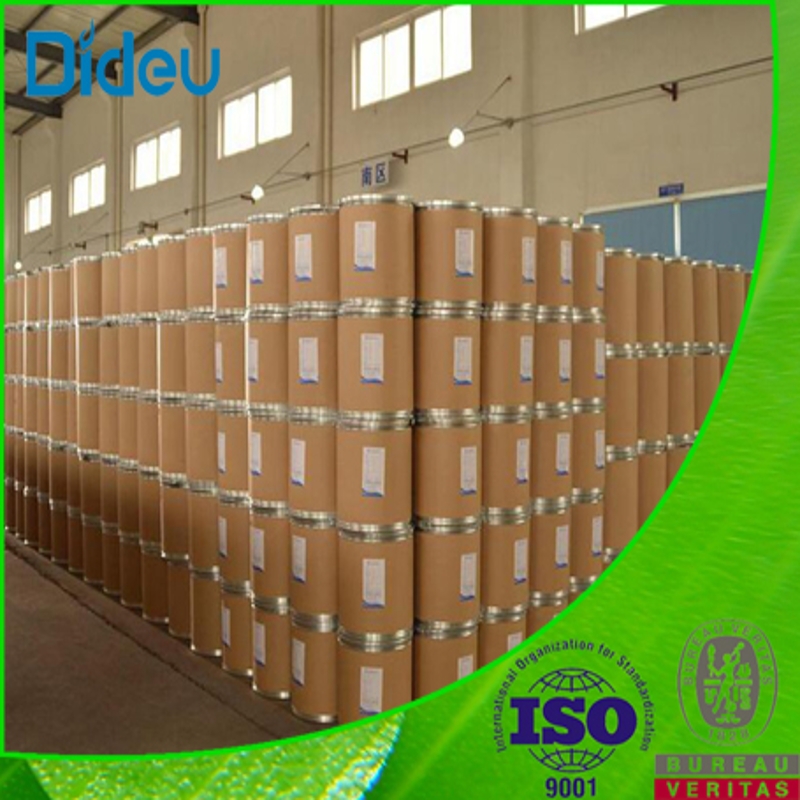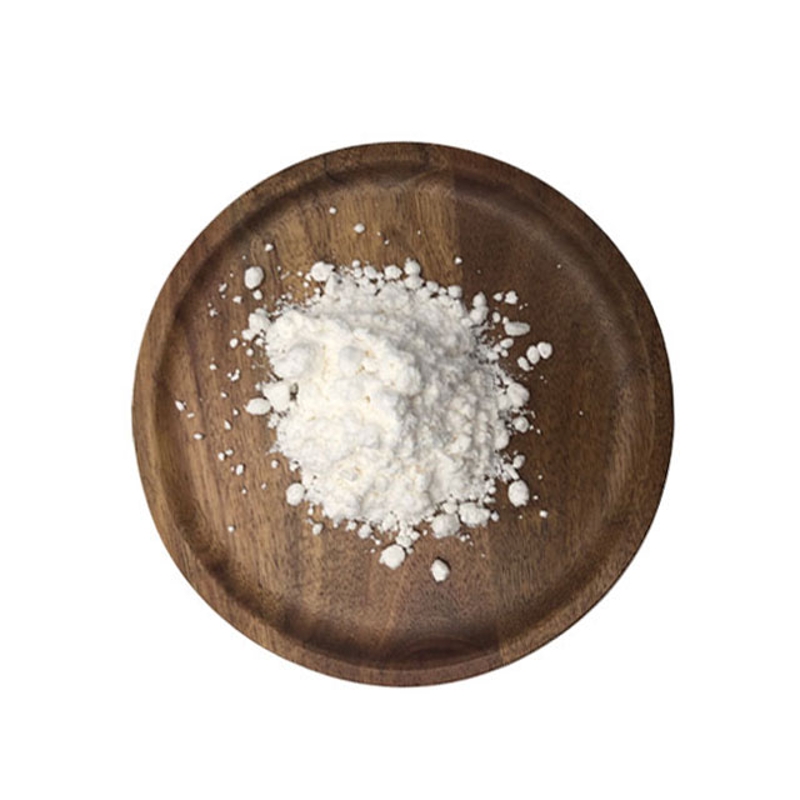-
Categories
-
Pharmaceutical Intermediates
-
Active Pharmaceutical Ingredients
-
Food Additives
- Industrial Coatings
- Agrochemicals
- Dyes and Pigments
- Surfactant
- Flavors and Fragrances
- Chemical Reagents
- Catalyst and Auxiliary
- Natural Products
- Inorganic Chemistry
-
Organic Chemistry
-
Biochemical Engineering
- Analytical Chemistry
-
Cosmetic Ingredient
- Water Treatment Chemical
-
Pharmaceutical Intermediates
Promotion
ECHEMI Mall
Wholesale
Weekly Price
Exhibition
News
-
Trade Service
Thymic tumors are relatively rare tumors, usually located in the anterior mediastinum.
The World Health Organization (WHO) pathological classification classifies them as thymic epithelial tumors, with an incidence of 1.
3-3.
2/1 million [1]
.
According to existing literature reports, many previously benign early thymic tumors may also have recurrence and metastasis after surgery.
Therefore, the related terms of malignant or benign thymoma are no longer appropriate.
Currently, all thymic tumors have been regarded as malignant tumors [2]
.
Thymic tumors are indolent tumors, and even after disease progression, some patients with thymoma still have a long survival time, with a 5-year survival rate close to 90% [3]
.
Author: Xu Jinbiao, Department of Oncology, High-tech Hospital, The First Affiliated Hospital of Nanchang
University
The patient's general condition The patient is female, 43 years old
.
The onset of chest tightness and shortness of breath was obvious after activities, and there was no discomfort such as chest pain, cough and sputum
.
Nothing special in the past
.
On 2022-01-18, I came to our department for medical treatment.
The medical imaging information processing system (PACS) showed that an irregular soft tissue mass was seen in the left mediastinum, the boundary was unclear, the size was about 8.
0 × 11.
7 × 15.
3 cm, and the density was uneven.
Cystic low-density shadow can be seen inside.
After enhanced scan, the lesion showed moderate inhomogeneous enhancement.
The mass was close to the blood vessels in the mediastinum, and there was no obvious fat space.
The brachiocephalic vein was invaded and the lumen was narrowed
.
Several slightly larger lymph nodes were seen next to the left trachea
.
Left pleural effusion, left pleural fusiform thickening was nodular, moderately homogeneous enhancement
.
Further mediastinal tumor puncture was performed, and the final diagnosis was thymoma (type B1), secondary malignant tumor of the pleura, Masaoka stage: IVA stage
.
Treatment decision-making The comprehensive treatment principles for Masaoka-Koga stage III-IVA thymoma, the 2021 edition of the "Chinese Guidelines for Clinical Diagnosis and Treatment of Thymic Epithelial Tumors" has made the following specifications [4]: (1) For patients with resectable lesions, direct surgical treatment is recommended; although Lack of high-level evidence, most data support postoperative adjuvant radiotherapy
.
(2) For patients with unresectable initial evaluation, neoadjuvant chemotherapy (preferably anthracycline-based regimen), neoadjuvant radiotherapy or neoadjuvant radiochemotherapy should be performed first.
surgical treatment
.
(3) If neoadjuvant radiotherapy is not performed before surgery, adjuvant radiotherapy should be given after surgery
.
If the lesion is incompletely excised, additional doses of radiotherapy are given to the local residual area
.
(4) If the lesion is still unresectable or R2 resection after induction therapy, give radical radiotherapy or choose concurrent radiotherapy and chemotherapy
.
(5) For patients with unresectable lesions, concurrent chemoradiotherapy can also be selected initially
.
The left mediastinal mass in this patient had a maximum diameter of 15.
3 cm, and the mass was close to the mediastinal blood vessels without obvious fat space.
The brachiocephalic vein was invaded with narrowed lumen and pleural invasion
.
The mediastinal mass was unresectable after initial evaluation by the thoracic surgery consultation.
After comprehensive consideration, chemotherapy was decided first.
According to the guidelines, the preferred regimen was cyclophosphamide + doxorubicin + cisplatin (CAP regimen)
.
Treatment effect The patient underwent 4 courses of chemotherapy from January 26, 2022 to April 20, specifically: cyclophosphamide 0.
7g d1 + doxorubicin hydrochloride liposome 50mg d1 + cisplatin 40mg d1, 30mg d2
.
The first and second efficacy evaluations after chemotherapy were performed on March 8 and April 18, 2022, respectively
.
The curative effect evaluation of the 2 re-examinations showed partial remission (PR)
.
The original large mediastinal lesion was significantly reduced after treatment, and the left pleural effusion was completely absorbed
.
Throughout the course of treatment, the patient had only mild nausea and vomiting, and no other discomfort
.
Experience and experience Thymic epithelial tumors originate from the thymus, including thymoma and thymic carcinoma
.
In 2015, WHO classified thymic epithelial tumors into types A, AB, B1, B2, B3, and C (ie, thymic carcinomas, including thymic neuroendocrine carcinomas)
.
According to the biological behavior differences of different subtypes of tumor tissue, the histological classification was simplified into low-risk group (type A, AB and B1), high-risk group (type B2 and B3) and thymic carcinoma group (type C)3 subtype
.
There are some differences in treatment and prognosis between the different groups
.
Thymoma can spread locally, but is much less aggressive than thymic carcinoma
.
The 5-year survival rate of patients with thymoma is about 90%
.
However, the 5-year survival rate for thymic carcinoma is about 55%
.
Thymic Tumors Although several staging systems exist, the Masaoka staging system has been the most widely accepted system for the management and determination of prognosis of thymoma and thymic carcinoma
.
Treatment options for thymic epithelial tumors include surgery, chemotherapy, and radiotherapy
.
According to different stages, choose the appropriate treatment strategy
.
The preferred chemotherapy regimen for thymoma is cyclophosphamide + doxorubicin + cisplatin (CAP regimen), and the preferred chemotherapy regimen for thymic carcinoma is paclitaxel + carboplatin
.
In recent years, there has been no significant progress in chemical drugs, and there has been preliminary exploration in targeted and immunotherapy.
The overall treatment progress of thymic epithelial tumors is relatively stagnant
.
A summary of its targeting and immune-related research is as follows: Exploration of targeted therapy for thymic epithelial tumors: (1) C-kit inhibitor: C-kit overexpression is common in thymic carcinoma, but rare in thymoma
.
almieri et al [5] treated 12 patients with thymic epithelial tumors with imatinib, and the study was terminated before the target benefit was achieved due to lack of response and low yield
.
(2) Epidermal growth factor receptor inhibitors: Kurup et al.
[6] conducted a phase II clinical study of gefitinib in the treatment of advanced thymoma and thymic carcinoma ineffective in chemotherapy and found that: 26 patients (19 thymoma, 7 thymoma There was no complete remission (CR) case, only 1 case of PR; 14 cases of short-term curative effect were stable disease (SD), of which 6 cases had stable disease for more than 4 months
.
(3) Insulin-like growth factor-1 inhibitors: IGF-1 receptors have higher expression levels in patients with thymic carcinoma and thymoma, and their increased expression has a poor prognosis for tumor overall survival and disease progression time
.
To date, no studies have reported the therapeutic effect of IGF-1R inhibitors
.
(4) Steroid receptor coactivator inhibitor: Gubens et al.
[7] reported the steroid receptor coactivator inhibitor cicatinib (AZDOS30) in the treatment of 21 patients (12 with thymoma and 9 with thymic carcinoma).
, the results showed that the median survival time was 5.
7 months for patients with thymoma and 3.
6 months for patients with thymic carcinoma
.
Thymic epithelial tumor immunotherapy exploration: There is a high PD-L1 expression in thymic tumor epithelial cells
.
The results of a phase I clinical study of the PD-L1 monoclonal antibody Abelumab in the treatment of advanced thymoma showed that disease remission was observed in 4 of 7 patients with recurrent advanced thymoma (2 with confirmed PR and 2 with unconfirmed thymoma).
PR), 2 cases of SD, 1 case of disease progression (PD), the objective response rate (ORR) was 57.
1%, and grade 2-4 adverse reactions were mainly immune system adverse reactions
.
Another single-center phase II study of pembrolizumab in thymic cancer progression after chemotherapy demonstrated an overall ORR of 22.
5% in 40 patients with evaluable thymic cancer
.
Patients with high PD-L1 expression in thymic epithelial tumors have a good effect on immunotherapy, but the current research results are limited to immunotherapy alone, and more research on combined immunotherapy is needed
.
Reference [1] Jong W , Blaauwgeers J , Schaapveld M , et al.
Thymic epithelial tumours: a population-based study of the incidence, diagnostic procedures and therapy.
[J].
European Journal of Cancer, 2008, 44(1) :123-130.
[2] De Tterbeck FC , Zeeshan A .
Thymoma: current diagnosis and treatment.
[J].
Chin Med J, 2013, 126(011):2186-2191.
[3] Huang J , Detterbeck FC , Wang Z , et al.
Standard Outcome Measures for Thymic Malignancies[J].
Journal of thoracic oncology: official publication of the International Association for the Study of Lung Cancer, 2010, 5(12):2017-2023.
[4]Chinese Physicians Chinese Association for Multidisciplinary Cancer Diagnosis and Treatment Professional Committee.
Chinese Guidelines for Clinical Diagnosis and Treatment of Thymic Epithelial Tumors (2021 Edition)[J].
Chinese Journal of Oncology, 2021, 43(4):10.
[5] Palmieri G , Marino M , Buonerba C , et al .
Imatinib mesylate in thymic epithelial malignancies[J].
Cancer Chemotherapy&Pharmacology, 2012.
[6] Kurup A , Burns M , Dropcho S .
Phase II study of gefitinib treatment in advanced thymic malignancies[J].
Journal of Infection, 2005, 41(2):172.
[7] Gubens MA , Burns M , Perkins SM , et al.
A phase II study of saracatinib (AZD0530 ), a Src inhibitor, administered orally daily to patients with advanced thymic malignancies[J].
Lung Cancer, 2015, 89(1):57-60.
Review: XY Typesetting: XY Execution: XY







